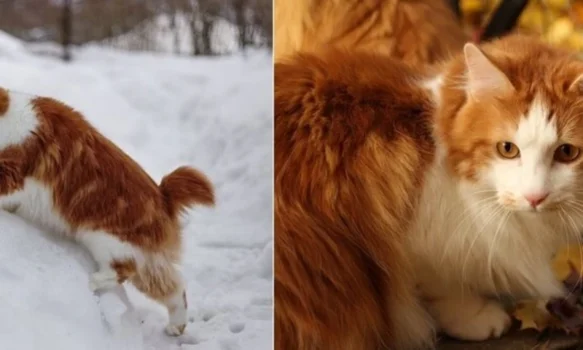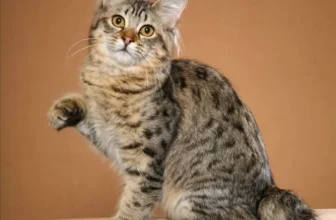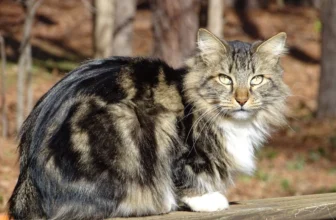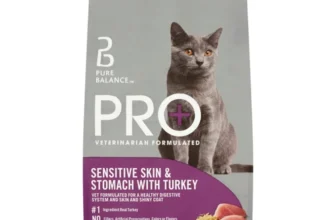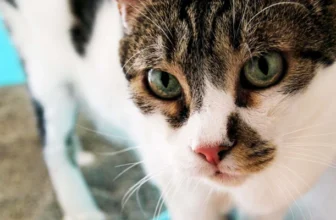Are you concerned about your American Bobtail’s dental health? With their unique teeth, these cats are prone to certain dental issues that can affect their overall wellbeing. But how can you tell if your cat is experiencing dental problems, and when is it time to take them to the vet? In this article, we’ll explore the dental anatomy of American Bobtails, common dental problems they may face, and the signs and symptoms to watch out for. We’ll also discuss when to schedule regular dental checkups, how to prepare for emergency visits, and the types of professional dental care services available. By the end of this article, you’ll have a better understanding of how to keep your American Bobtail’s teeth healthy and happy.
Understanding Dental Problems in American Bobtails
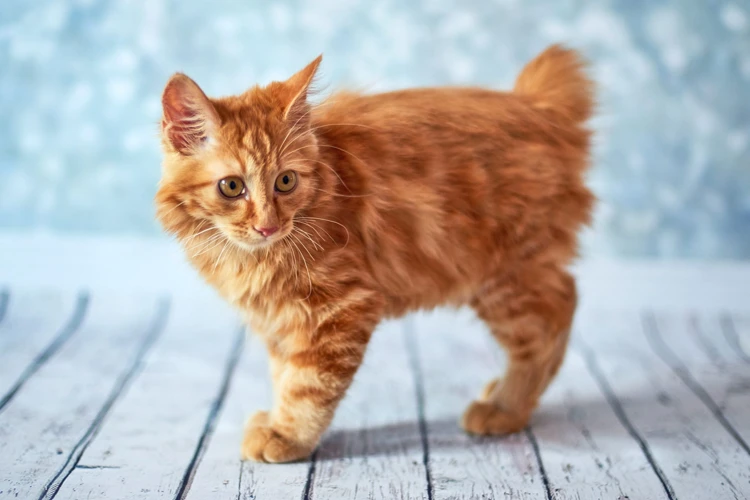
Understanding dental problems in American Bobtails is essential for keeping your feline friend happy and healthy. Just like humans, cats suffer from various dental problems that can lead to discomfort, pain, and even serious health complications if left untreated. It’s important to recognize and address dental issues in a timely and appropriate manner. In this section, we will explore the dental anatomy of American Bobtails, common dental problems they may encounter, and ways to prevent and detect such problems. For more information on dental health for American Bobtail cats, check out our guide on the topic.
Dental Anatomy of American Bobtails
The dental anatomy of American Bobtails is similar to that of other domestic cats. Like other cats, American Bobtails have four types of teeth: incisors, canines, premolars, and molars. However, American Bobtails have a unique feature in their teeth anatomy that sets them apart from other domestic cats. They have wide-set, powerful jaws with larger teeth to accommodate their hunting lifestyle. Their teeth have a sharp biting surface and strong molars to hold and crush prey.
The teeth of American Bobtails are also crucial for grooming. Their teeth have a rough surface that enables them to remove hair, dirt, and parasites from their coat. Their tongue is covered with tiny, backward facing hooks that comb through their fur to pick up loose hair and debris.
Despite their strong teeth and jaws, American Bobtails are still susceptible to dental issues that can be painful and lead to serious health complications. It is essential for cat owners to be familiar with their feline’s dental anatomy and the potential problems that may arise from it. Proper dental care, such as regular teeth brushing, is essential in preventing dental problems. You can read more about dental problems prevention in our article “Preventing Dental Problems in American Bobtails”. For a guide on teeth brushing, check out our article “American Bobtail Teeth Brushing Guide.”
Here are some of the common dental issues that American Bobtails may face:
- Gum Disease: American Bobtails are prone to gum disease due to the buildup of plaque and tartar in their teeth. If left untreated, gum disease can lead to tooth loss and other serious health issues.
- Broken or Chipped Teeth: American Bobtails may break or chip their teeth due to trauma or chewing on hard objects. Broken teeth can cause pain, discomfort, and lead to bacterial infection if left untreated.
- Periodontal Disease: This is an advanced form of gum disease that affects the tissues surrounding the teeth. It can cause tooth loss and other serious health problems if not treated.
- Oral Cancer: Like humans, cats are also susceptible to oral cancer. Symptoms include swollen gums, bad breath, and difficulty eating.
It is important to keep an eye on your American Bobtail’s dental health and report any changes to your veterinarian immediately. You can read more about dental treatments for American Bobtails in our article “Dental Treatments for American Bobtails.” Additionally, providing your cat with dental toys and feeding them a healthy diet can also help maintain their dental health. You can also check out our article on “Best Cat Food for American Bobtail’s Dental Health.”
Taking good care of your American Bobtail’s teeth from the start is the key to a healthy mouth and a happy cat. For more tips on American Bobtail teeth care, check out our article on “American Bobtail Teeth Care Tips.” Finally, if you notice bad breath in your American Bobtail, it could be a sign of dental problems or other underlying health issues. You can read more about the causes and treatments of bad breath in cats in our article “Bad Breath in Cats: Causes and Treatments.”
Common Dental Problems in American Bobtails
When it comes to American Bobtail’s dental health, there are some common issues that these cats may face throughout their life. As a responsible pet owner, it’s important to be aware of these dental problems and take necessary action to prevent and treat them.
Dental Tartar and Plaque Buildup: Dental tartar and plaque buildup is one of the most common dental issues in American Bobtails. This buildup can lead to gum inflammation, tooth decay, and tooth loss. It’s important to brush your cat’s teeth regularly and provide them with dental toys to help prevent tartar and plaque buildup.
Gingivitis: Gingivitis is a periodontal disease that causes inflammation and bleeding of the gum tissues. It’s caused by the buildup of plaque and tartar on teeth. Without proper treatment, gingivitis can progress to periodontitis, which can cause tooth loss. Regular dental cleanings and a healthy diet can help prevent gingivitis in American Bobtails.
Tooth Resorption: Tooth resorption is a common condition in which the root structure of a tooth begins to dissolve, leading to tooth loss. This condition is painful and difficult to detect in its early stages. Regular dental checkups are important to catch and treat tooth resorption early.
Oral Cancer: Oral cancer is a serious condition that affects the tissues of the mouth and can be life-threatening if left untreated. The symptoms of oral cancer include bleeding, lumps and bumps in the mouth, and difficulty eating or drinking. Regular dental checkups can help detect signs of oral cancer early on.
Mouth Sores: Mouth sores can be caused by a variety of factors, including infections, allergies, and autoimmune diseases. These sores can be painful and cause difficulty eating and drinking. Regular dental checkups can help detect and treat mouth sores before they become serious.
By being aware of these common dental problems in American Bobtails, you can take necessary steps to prevent them and seek professional help when required. Providing regular dental care, taking your cat for regular checkups, and incorporating healthy habits can help maintain your American Bobtail’s dental health. Including dental toys in your cat’s routine is an easy way to help maintain healthy teeth. Check out our article on the 5 Best Dental Toys for American Bobtail Cats for some ideas.
Signs and Symptoms of Dental Issues in American Bobtails
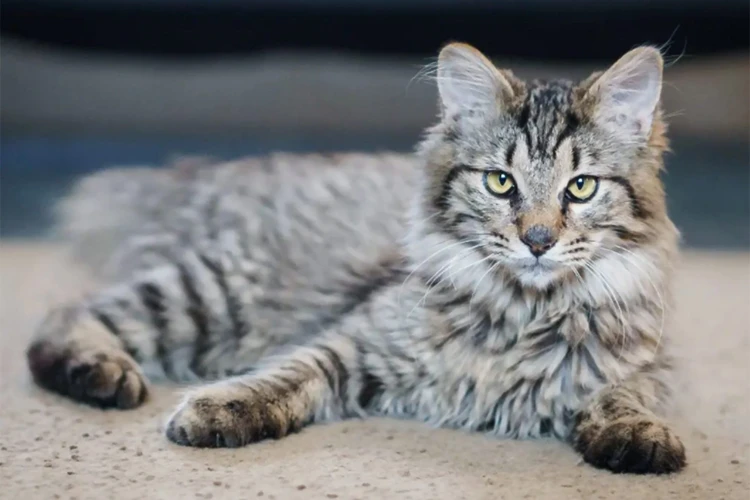
As a responsible American Bobtail owner, it is crucial to be aware of the signs and symptoms of dental issues in your furry friend. Ignoring dental problems could lead to severe pain and discomfort for your cat, which might affect their overall health. Regular dental checkups and proper dental care are essential for your American Bobtail’s oral hygiene. In this section, we will discuss some of the common signs and symptoms of dental issues your cat may experience. Being aware of these symptoms could help you take prompt action to prevent the problem from getting worse. If you’re also interested in some fun and healthy ways to maintain your cat’s oral hygiene, check out our article on the 5 Best Dental Toys for American Bobtail Cats.
Halitosis (Bad Breath)
Halitosis, commonly known as bad breath, is a common symptom of dental issues in American Bobtails. It can be caused by a variety of factors including the buildup of plaque, tartar, and bacteria in the mouth. Some American Bobtails may also suffer from underlying health conditions that can contribute to halitosis.
Causes of Halitosis in American Bobtails
| Cause | Description |
|---|---|
| Plaque and Tartar buildup | Plaque and tartar buildup on American Bobtail’s teeth promotes bacterial growth, which can lead to bad breath. |
| Poor Oral Hygiene | If American Bobtails are not provided with proper oral hygiene, they can develop dental issues and bad breath. |
| Periodontal Disease | American Bobtails suffering from periodontal disease, a severe form of gum disease, can develop halitosis. |
| Oral Infections | Oral infections caused by bacteria and viruses can lead to bad breath in American Bobtails. |
| Systemic Illnesses | Some systemic illnesses, such as kidney disease and diabetes, can cause halitosis in American Bobtails. |
Symptoms of Halitosis in American Bobtails
Halitosis can be diagnosed by observing specific symptoms in American Bobtails. Some of the symptoms are:
- Foul odor when the American Bobtail breathes
- Inflamed or red gums
- Seeing a yellowish-brown coat on the cat’s tongue or teeth
- Bleeding gums when the cat chews or exhibits other abnormal behaviors when eating
Prevention and Treatment of Halitosis in American Bobtails
Halitosis can be prevented and treated through proper dental care procedures such as:
- Regular brushing of American Bobtail’s teeth with an appropriate toothbrush and toothpaste
- Encouraging American Bobtails to drink plenty of water to wash away bacteria and food particles from their mouths
- Providing American Bobtails with high-quality food that helps to maintain their oral hygiene
- Regularly taking American Bobtails for dental checkups to detect any dental issues early on
If American Bobtails develop halitosis, it is important to take them to the veterinarian immediately. The vet will carry out an examination to determine the underlying cause of the halitosis. If the cause is dental issues, the vet may recommend scaling and polishing of the teeth, or extractions of affected teeth. Some underlying health conditions may require a change in the American Bobtail’s diet and medication. Taking swift action to treat the underlying cause of halitosis can help to prevent more severe dental health complications in American Bobtails.
Inflamed Gums and Mouth
Inflamed gums and mouth are one of the most common dental issues in American Bobtails. This condition is also known as gingivitis, which is the inflammation of the gums caused by the buildup of plaque on the teeth. Plaque is a sticky film of bacteria that forms on the teeth over time. If not removed, it can harden into tartar, which can lead to more serious issues like periodontitis.
Causes of Inflamed Gums and Mouth in American Bobtails
There could be several causes of inflamed gums and mouth in American Bobtails, including:
| Cause | Description |
|---|---|
| Poor oral hygiene | If your American Bobtail’s teeth are not brushed regularly, plaque and tartar can build up, leading to inflammation of the gums. |
| Feline viral infections | Viral infections like feline leukemia virus (FeLV) and feline immunodeficiency virus (FIV) can weaken the immune system, making it easier for bacteria to cause gum inflammation. |
| Diet | A diet that lacks essential nutrients can weaken your American Bobtail’s immune system, which increases the risk of developing inflamed gums and mouth. |
Treatment and Prevention of Inflamed Gums and Mouth
If you notice that your American Bobtail has inflamed gums or mouth, it’s important to take them to the vet as soon as possible. Treatment for inflamed gums and mouth usually involves a professional cleaning under anesthesia to remove the plaque and tartar buildup on the teeth. In some cases, the vet may prescribe antibiotics to help control the infection.
Preventing inflamed gums and mouth is best achieved through a combination of good oral hygiene and regular veterinary checkups. Brush your American Bobtail’s teeth at least twice a week, and feed them a healthy diet that’s complete and balanced. Regular checkups with your vet can help identify potential dental issues before they become serious problems.
Inflamed gums and mouth in American Bobtails can be caused by poor oral hygiene, feline viral infections, and diet. Early intervention through regular veterinary checkups and good oral hygiene is vital to ensuring your American Bobtail’s dental health, and preventing more serious dental issues from occurring.
Broken, Loose or Missing Teeth
Broken, loose or missing teeth are a serious issue that can cause a lot of pain and discomfort in American Bobtails. There are many reasons why your cat might experience these issues including trauma, disease, and poor dental hygiene. If your cat is suffering from any of these problems, it is important to schedule a visit to your vet as soon as possible.
Dental Trauma: Trauma to a cat’s mouth, such as a fall, can cause broken or loose teeth. This can be incredibly painful for your cat and can also lead to infection. Some signs that your cat may have dental trauma include bleeding from their mouth, reluctance to eat, and pawing at their face. If you notice any of these symptoms, take your cat to the vet immediately.
Dental Disease: Dental disease can cause teeth to become loose or fall out. This is because the disease can affect the structures that hold the teeth in place. Common dental diseases in American Bobtails include periodontal disease and tooth resorption. Some signs of dental disease in cats include bad breath, inflamed gums, and difficulty eating. A veterinarian can assess the severity of your cat’s dental disease and recommend appropriate treatment.
Poor Dental Hygiene: Poor dental hygiene can also cause broken, loose or missing teeth in American Bobtails. When your cat’s teeth are not properly cared for, they are more likely to develop dental disease, which can lead to tooth loss. Regular brushing, dental chews, and dental cleanings can help prevent dental disease and maintain good dental health for your cat.
To prevent broken, loose or missing teeth, it is important to provide proper dental care for your American Bobtail. This includes regular dental checkups, daily brushing, and providing dental treats and toys. If you notice any signs of dental problems in your cat, don’t hesitate to schedule a veterinary visit. Your vet can provide the necessary treatment to keep your cat’s teeth healthy and pain-free.
Bleeding Gums
Bleeding gums in American Bobtails can be a sign of serious dental issues. It is important to monitor your cat’s gums for any signs of bleeding and take necessary action. Here are some possible causes of bleeding gums in American Bobtails:
| Cause | Symptoms | Treatment |
|---|---|---|
| Gingivitis | – Red, swollen and bleeding gums – Bad breath – Difficulty eating |
– Professional teeth cleaning – Antibiotics if there is an infection – Regular brushing and dental care at home |
| Trauma | – Bleeding and swelling in the gums and mouth – Broken teeth – Difficulty eating |
– Immediate veterinary attention – Pain relief medication – Possible tooth extraction or repair |
| Blood disorders | – Unexplained bleeding in the gums and other areas – Weakness – Pale gums – Extreme lethargy |
– Diagnostic tests to determine the underlying cause – Treatment may include medication, transfusions or other medical procedures depending on the specific condition |
If you notice bleeding gums in your American Bobtail, it is important to schedule an appointment with your veterinarian as soon as possible. Delaying treatment can lead to further complications and pain for your cat. By addressing the issue early on, you can ensure that your American Bobtail receives the best possible care and treatment for their dental health.
Difficulty Chewing or Reduced Appetite
Sometimes, American Bobtails with dental problems start experiencing difficulty chewing or may lose interest in their food. This usually happens because eating causes them pain. If you notice that your furry friend is struggling to eat or has a reduced appetite, it may be time to check their teeth. Here are some signs that your cat is having difficulty chewing or has a reduced appetite:
- Chewing on one side of the mouth: If your cat chews on one side of their mouth or favors one side, there might be a problem with one or more teeth on the other side.
- Chewing slower than usual: When cats experience dental pain, they usually eat slower than usual or may take longer to finish their food.
- Avoiding hard or crunchy foods: If your cat avoids hard or crunchy foods that they used to enjoy, it could be an indication of tooth pain.
- Losing weight: Cats that experience dental problems will often lose weight because they are in pain and cannot eat as much as usual. If your cat is rapidly losing weight or has no interest in eating, they should be taken to a veterinarian as soon as possible.
Remember that cats are masters of hiding their discomfort or pain, so it is up to you to keep an eye out for new behaviors or symptoms. If you notice any of the above signs or suspect that something might be wrong with your American Bobtail’s dental health, consult with a veterinarian as soon as possible.
When to Visit a Vet for Your American Bobtail’s Dental Issues
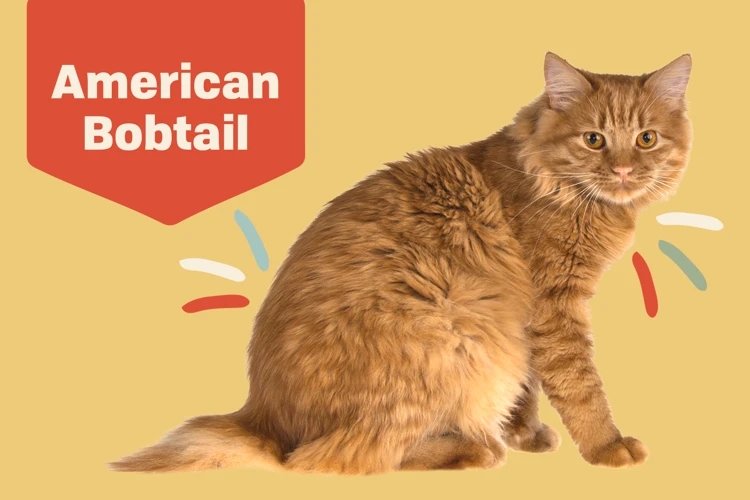
As a cat owner, it is important to be aware of the signs and symptoms of dental issues in your American Bobtail. Dental problems can cause discomfort and affect your cat’s overall health. But how do you know when it’s time to seek veterinary care for your furry friend? In this section, we will discuss the circumstances when you should consider visiting a vet for your American Bobtail’s dental issues. By being proactive and attentive, you can help your cat maintain a healthy and happy life.
Scheduling Regular Dental Checkups
American Bobtails require regular dental checkups to ensure that their teeth and gums are healthy. The frequency of dental checkups may vary depending on your cat’s age, lifestyle, and dental history. In general, it is recommended to schedule dental checkups at least once a year.
Benefits of Regular Dental Checkups for American Bobtails
Regular dental checkups can help detect dental problems early on, which can save your cat from a lot of pain and discomfort. Listed below are some of the benefits of scheduling regular dental checkups for your American Bobtail:
| Benefits of Regular Dental Checkups |
|---|
| Prevention of dental disease |
| Early detection of dental problems |
| Prevention of tooth loss |
| Improve overall health and well-being |
| Reduce the risk of developing oral cancer |
Preparing for Your Cat’s Dental Checkup
Before taking your American Bobtail to the vet for a dental checkup, it is important to prepare him or her for the visit. Here are some tips to help you prepare:
| Tips for Preparing your Cat for a Dental Checkup |
|---|
| Provide plenty of water to keep your cat hydrated |
| Do not feed your cat anything for at least 12 hours before the checkup |
| Bring any prior dental records or information about your cat’s dental history |
| Bring your cat’s favorite toy or blanket to help him or her feel more comfortable |
| Speak to your cat in a soft and calming voice to ease any anxiety or stress |
Conclusion
Regular dental checkups are an important part of keeping your American Bobtail healthy and happy. By scheduling regular checkups and preparing your cat for the visit, you can help ensure that any dental problems are detected and treated early on. Remember to always consult with your vet to determine the best dental care plan for your cat.
Taking Your Cat to the Vet for Emergencies
Emergencies related to your American Bobtail’s dental health can arise at any time. It is crucial to recognize the symptoms of dental problems and act promptly to seek veterinary care. Here are some tips on taking your cat to the vet for dental emergencies:
- Identify the Symptoms: Look for signs of extreme pain, such as crying out or reluctance to let anyone touch their mouth. Notice any bleeding, inflammation, or pus in the gums or mouth. If your cat’s eating habits have changed, it’s an indication of toothache or other dental problems. You should also keep an eye out for other non-specific symptoms such as fever, lethargy, and difficulty moving around.
- Call ahead: If you have an emergency, call ahead to the veterinary clinic nearest to you that provides emergency services. Explain the situation and ask if they can take your cat immediately. This could save time and also help the vet to prepare to administer the care that your cat will need.
- Be Prepared: When you take your cat to the vet, prepare all the necessary documents and information about your cat’s medical history, any medications, and supplements they take. This can help the vet to understand your cat’s overall health status and treat them properly.
- Stay Calm and Soothe Your Cat: It’s normal for your cat to be scared or agitated in a new environment or during a veterinary examination. Try to stay calm and assure your cat everything will be okay. Speak to it in a soothing tone of voice and offer comfort in the form of gentle stroking or holding gently to keep it calm during the examination.
- Trust the Vet: The vet will perform a thorough examination of your cat’s mouth and teeth to identify the exact problem. They may also recommend diagnostic tests like X-rays to determine the root cause of your cat’s dental problem. Trust your vet and follow the treatment plan they provide. Ask any relevant questions to clarify your doubts and ensure that you understand the prescribed treatment and follow-up requirements.
Remember, always prioritize your American Bobtail’s health and well-being. With timely intervention, most dental issues can be treated effectively, minimizing pain and discomfort for your cat.
Preparing for Your Vet Visit
Preparing for your American Bobtail’s vet visit is an important step towards ensuring your furry friend receives the proper care and treatment they need. To make the most out of your vet visit, it’s essential to be well-prepared beforehand. Here are some tips:
| Tip | Description |
|---|---|
| Tip #1: Schedule an Appointment | Before any vet visit, call ahead of time and schedule an appointment. This will save you time and ensure the vet is available when you arrive. |
| Tip #2: Gather necessary information | It’s important to gather all necessary information about your American Bobtail’s medical history, dietary needs, and any medications they are currently taking. This information will help your vet better understand your cat’s needs and make an accurate diagnosis. |
| Tip #3: Bring your cat in a secure carrier | American Bobtails can get nervous during vet visits, so it’s crucial to keep them secure in a carrier. This will keep them safe and prevent them from running away or getting injured. |
| Tip #4: Bring a list of questions and concerns | It’s a good idea to write down any questions or concerns you have ahead of time, so you don’t forget to ask your vet. This will also help your vet understand your cat’s needs and give you the best possible advice. |
| Tip #5: Be honest with your vet | It’s essential to be honest with your vet about any symptoms or behaviors your American Bobtail is experiencing. Any information, no matter how small, can help your vet make an accurate diagnosis. |
| Tip #6: Bring a friend or family member | If you’re feeling nervous about your American Bobtail’s vet visit, consider bringing a friend or family member for support. Having someone there can help ease your stress and make the visit less overwhelming. |
By following these tips, you can help ensure that your American Bobtail has a stress-free and successful vet visit. Remember, it’s always better to be over-prepared than under-prepared when it comes to your cat’s health and wellbeing.
Professional Dental Care for American Bobtails
As responsible pet owners, we should ensure our American Bobtails have access to professional dental care services. These services can range from routine dental cleanings to more complex procedures for treating dental issues. Professional dental care can help prevent serious health problems and improve your cat’s overall well-being. In this section, we will explore the types of professional dental care services available for American Bobtails, what to expect during a dental service, and aftercare for your beloved feline. Let’s dive in to learn more about how to ensure our cat’s dental health is in top-notch condition.
Types of Professional Dental Care Services
American Bobtails are prone to dental problems, and it can be challenging to keep their teeth clean without professional dental care. Professional dental care services provide various treatments that help maintain and treat dental issues in American Bobtails. In this section, we’ll discuss the different types of professional dental care services available for American Bobtails.
| Type of Service | Description |
|---|---|
| Oral Examination | An oral examination is an assessment of your American Bobtail’s teeth, gums, tongue, and mouth. The vet will perform a visual inspection of the mouth, check for signs of inflammation, and ensure that the teeth and gums are healthy. |
| Dental Cleaning | A dental cleaning involves removing the tartar and plaque buildup on the teeth. The veterinary dental hygienist will use an ultrasonic scaler to remove the buildup, followed by polishing the teeth to remove any remaining tartar and plaque. A dental cleaning is done under anesthesia, and if necessary, dental x-rays may be taken. |
| Tooth Extraction | Tooth extraction is the removal of a damaged or loose tooth. The veterinarian will administer anesthesia to your cat, and once they’re sedated, they will remove the affected tooth. After the extraction, your American Bobtail will receive pain medication to help manage any discomfort. |
| Periodontal Therapy | Periodontal therapy is the treatment of gum disease in American Bobtails. It involves cleaning the teeth above and below the gum line to remove bacteria, tartar, and plaque. The veterinarian may also prescribe antibiotics, and in severe cases, surgery may be necessary. |
| Oral Surgery | Oral surgery is performed when American Bobtails have severe dental problems, such as jaw fractures or a severe infection that cannot be treated with antibiotics. The veterinarian will perform the surgery while your cat is under anesthesia, and after the surgery, your cat will receive medication to help manage any discomfort. |
It’s important to note that only a licensed veterinarian should perform professional dental care services for your American Bobtail, and it’s crucial to follow their aftercare instructions carefully. Professional dental care services can help maintain your cat’s dental health and prevent further dental issues from developing.
What to Expect During a Professional Dental Care Service
During a professional dental care service, your American Bobtail will receive comprehensive dental care from a licensed veterinarian. Here are some aspects of the procedure you can expect:
- Oral examination: The vet will examine your cat’s mouth to check for any abnormalities, such as missing or broken teeth, inflamed gums or oral tumors.
- Dental cleaning: Next, dental cleaning is performed to get rid of any tartar, plaque and debris on your cat’s teeth. The vet will use professional dental tools to scrape the teeth gently and thoroughly clean all areas of the mouth, including those hard-to-reach places.
- Scaling and polishing: Scaling is performed to remove tartar buildup that may be causing discomfort for your cat. Polishing helps to smooth the teeth to prevent further plaque accumulation. This process also helps in teeth whitening.
- X-rays: X-rays may be taken if the vet suspects any advanced dental problems such as rotting of the teeth or bone loss. This process is conducted with utmost care to minimize your cat’s exposure to radiation.
- Tooth extractions: If a tooth is severely decayed, or it cannot be saved, the vet will have to extract it. This procedure is performed under anesthesia to prevent discomfort to your cat.
- Antibiotics: In some cases, the vet may prescribe antibiotics to prevent or treat an infection in the mouth. This is typically given before or after the procedure.
It’s essential to choose a vet with experience in treating American Bobtails for their dental issues. Remember, dental care is crucial to your cat’s wellbeing. Getting regular professional dental care can help prevent dental problems, maintain good oral hygiene and promote your American Bobtail’s overall health.
Aftercare for Your American Bobtail
Taking care of your American Bobtail after a professional dental care service is just as important as the initial treatment itself. Your veterinarian will provide you with specific instructions on how to care for your cat, but here are some general tips to keep in mind.
1. Provide Soft Food: After the dental care service, your cat may experience some discomfort and difficulty eating. It is important to provide soft and easy-to-eat food, such as canned food or soaked kibble, for a few days until your cat feels more comfortable.
2. Administer Medications: Your veterinarian may prescribe pain relievers or antibiotics for your cat after the dental care service. Be sure to follow the medication instructions carefully and give the prescribed dose at the recommended times.
3. Monitor Your Cat: Keep a close eye on your cat’s behavior and eating habits in the days following the dental care service. If you notice any unusual behavior or signs of pain, contact your veterinarian immediately.
4. Maintain Oral Hygiene: After the dental care service, it is important to maintain good oral hygiene for your cat. Regular brushing with a specially designed cat toothbrush and toothpaste will help prevent plaque and tartar buildup.
Here is a table summarizing the aftercare tips:
| Aftercare Tips for American Bobtail’s Dental Care Service |
|---|
| Provide soft and easy-to-eat food for a few days |
| Administer medications as prescribed by your veterinarian |
| Monitor your cat’s behavior and eating habits |
| Maintain good oral hygiene through regular brushing |
By following these tips, you can ensure that your American Bobtail recovers well after their dental care service and maintains good oral health in the long run.
Conclusion
After reading this article, you should now have a better understanding of the dental issues that American Bobtails can experience and the signs to watch out for. Remember that regular dental checkups with a veterinarian are crucial for maintaining your cat’s dental health and addressing any issues before they become more serious.
If you notice any signs of dental problems, such as bad breath, inflamed gums, or difficulty eating, it’s important to schedule a vet visit as soon as possible. The earlier these issues are addressed, the better the outcome for your cat’s oral health.
Professional dental care services, such as dental cleanings and extractions, may be necessary for more serious dental issues. Your vet can provide guidance on the best course of action and aftercare for your American Bobtail.
Above all, remember to prioritize your cat’s dental health as an essential part of their overall wellbeing. A healthy mouth leads to a happier, healthier cat.
Frequently Asked Questions
1. How often should I schedule dental checkups for my American Bobtail?
It is recommended to schedule dental checkups at least once a year for your American Bobtail.
2. What are some home remedies for dental issues in American Bobtails?
While there are some home remedies such as brushing your cat’s teeth or giving them dental chews or treats, it is always recommended to consult with your vet first before trying any home remedies.
3. Do American Bobtails experience dental problems more often than other cat breeds?
There is no evidence to suggest that American Bobtails experience dental problems more often than other cat breeds. However, like all cats, American Bobtails require proper dental care.
4. Can I use human toothpaste on my American Bobtail?
No, it is not safe to use human toothpaste on your American Bobtail. Human toothpaste contains ingredients like fluoride which can be toxic to your cat. Always use toothpaste specifically designed for cats.
5. How can I prevent dental issues in my American Bobtail?
You can prevent dental issues in your American Bobtail by making sure they have a healthy diet, providing them with dental toys and treats, and scheduling regular dental checkups with your vet.
6. Can dental issues in American Bobtails lead to other health problems?
Yes, dental issues in American Bobtails can lead to other health problems such as kidney disease, heart disease, and even certain types of cancer.
7. Do American Bobtails require anesthesia for dental procedures?
Yes, American Bobtails require anesthesia for dental procedures to ensure their safety and comfort during the procedure.
8. Can dental issues in American Bobtails be genetic?
Yes, dental issues in American Bobtails can be genetic. It is always recommended to ask your breeder about the dental history of your cat before adopting them.
9. How much does professional dental care for American Bobtails usually cost?
The cost of professional dental care for American Bobtails ranges from $200 to $800 depending on the type of procedure and the severity of the issue.
10. What is the best way to brush my American Bobtail’s teeth?
The best way to brush your American Bobtail’s teeth is by using a soft-bristled toothbrush specifically designed for cats and toothpaste that is safe for cats. You can start by getting your cat used to the toothbrush by letting them smell and lick it, then gradually introducing toothpaste and brushing their teeth in a circular motion.

